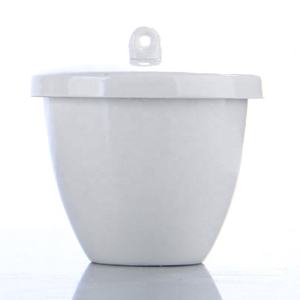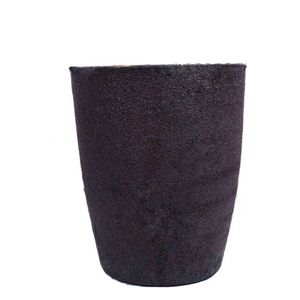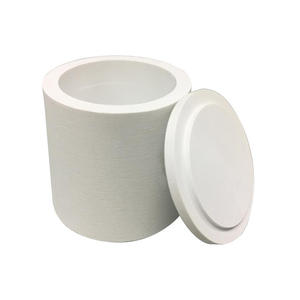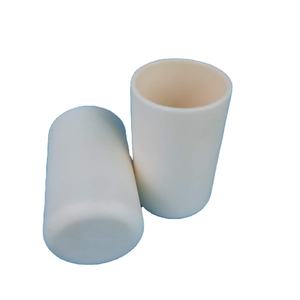Professional industry ceramic supplier, silicon nitride, silicon carbide, aluminum nitride and any other kinds of ceramics.
PRODUCT PARAMETERS
Description
Overview of High-temperature Resistant Alumina Ceramic Crucible
High-temperature Resistant Alumina Ceramic Crucible are specialized containers designed for withstanding extremely high temperatures in laboratory and industrial settings. They are essential for processes such as melting, calcining, and heat-treating a wide variety of materials, including metals, glasses, and chemicals. Our crucibles are engineered for superior thermal stability and chemical resistance, ensuring purity and reliability in the most demanding applications.
Features of High-temperature Resistant Alumina Ceramic Crucible
-
Exceptional Thermal Shock Resistance: Withstands rapid temperature changes without cracking, ensuring durability and a long service life.
-
High-Temperature Stability: Maintains structural integrity at extreme temperatures, often exceeding 1500°C.
-
Excellent Chemical Inertness: Resists corrosion and reaction with molten metals, acids, and aggressive chemical fluxes.
-
High Purity & Low Contamination: Manufactured from premium materials to prevent sample contamination during sensitive processes.
-
Optimized Thermal Properties: Designed for efficient heat transfer and consistent performance in furnace environments.
-
Robust Mechanical Strength: Offers good resistance to physical impact and abrasion during handling and use.
Specifications of High-temperature Resistant Alumina Ceramic Crucible
This alumina ceramic crucible handles extreme heat. It withstands temperatures over 1800 degrees Celsius easily. That makes it perfect for labs and industry needing serious heat. Pure alumina ceramic is the material. It offers outstanding thermal stability. You get consistent results batch after batch.
High density is a key feature. This crucible is very dense. High density means less porosity. Less porosity stops samples absorbing into the crucible walls. Your materials stay pure. Contamination risks drop significantly. Cleaning becomes straightforward too.
Thermal shock resistance is excellent. This crucible handles sudden temperature swings well. Moving it from a hot furnace to a cooler area won’t cause cracks. This durability saves time and money. You avoid replacing broken crucibles constantly.
Mechanical strength is high. This crucible resists physical wear and impact better than many alternatives. It maintains its shape under load. Long service life is expected with normal careful use.
Chemical inertness is guaranteed. This crucible resists attack from most acids and alkalis. It won’t react with your samples. Chemical purity stays high throughout your process. You get reliable, uncontaminated results.
The smooth surface finish is important. It prevents material sticking. Emptying samples is easy. Cleaning requires minimal effort. This crucible works reliably in demanding settings like metal melting, powder processing, and high-temperature chemical analysis. Its performance is proven.
Applications of High-temperature Resistant Alumina Ceramic Crucible
Alumina ceramic crucibles handle extreme heat extremely well. They are made from pure aluminum oxide. This material gives them special abilities. High temperatures don’t damage them easily. They work reliably over 1700°C. Some special grades go even higher. This heat resistance is their main advantage.
Chemical attacks are rarely a problem for these crucibles. Acids and bases usually don’t affect them. Molten metals and aggressive fluxes find it hard to damage the surface. This combination of heat and chemical toughness makes them very useful. They last a long time in tough conditions.
Metal foundries depend on these crucibles daily. Melting aluminum, copper, or precious metals like gold and platinum happens inside them. They contain the molten metal safely. The crucible itself stays intact. Chemical plants use them too. Processing special chemicals often needs high heat. Alumina crucibles provide a safe container. They don’t contaminate the materials inside.
Research and quality control labs are big users. Scientists heat samples for analysis inside these crucibles. Testing materials at extreme temperatures requires reliable tools. Alumina crucibles are that tool. They ensure experiments are accurate. Sample purity stays high. The crucible doesn’t add unwanted elements.
Glass makers also find them helpful. Preparing glass batches involves intense heat. Alumina crucibles withstand the furnace conditions. They hold the raw materials while they melt. Growing crystals is another application. Precise high-temperature control is needed. These crucibles offer a stable environment for crystal growth.
Handling them needs care. They are strong but can crack from sudden impacts. Thermal shock is a risk. Avoid heating or cooling them too quickly. Use proper tools when moving them hot. Their strength comes from the dense ceramic structure. This structure resists wear and tear.
Company Profile
Tanki New Materials Co.Ltd. focus on the research and development, production and sales of ceramic products, serving the electronics, ceramics, chemical and other industries. Since its establishment in 2015, the company has been committed to providing customers with the best products and services, and has become a leader in the industry through continuous technological innovation and strict quality management.
Our products includes but not limited to Aerogel, Aluminum Nitride, Aluminum Oxide, Boron Carbide, Boron Nitride, Ceramic Crucible, Ceramic Fiber, Quartz Product, Refractory Material, Silicon Carbide, Silicon Nitride, ect. please feel free to contact us.

Payment Methods
T/T, Western Union, Paypal, Credit Card etc.
Shipment Methods
By air, by sea, by express, as customers request.
5 FAQs of High-temperature Resistant Alumina Ceramic Crucible
What material is the crucible?
This crucible is pure alumina ceramic. Alumina ceramic handles extreme heat very well. It resists melting or breaking down at high temperatures. This makes it reliable for repeated use in harsh conditions.
How hot can it get?
It safely withstands temperatures up to 1800°C (3272°F). This is much hotter than many metals or other ceramics. It works perfectly in furnaces, kilns, and intense lab processes. Never exceed its maximum rating.
Will chemicals damage it?
Alumina ceramic strongly resists acids and alkalis. Most common lab chemicals won’t harm it. Harsh chemicals like hydrofluoric acid or strong molten alkalis are exceptions. Avoid those. It lasts longer against corrosion than metal crucibles.
Can it handle sudden temperature changes?
Yes, it has good thermal shock resistance. You can heat it fast or cool it quickly without it cracking. This is a key advantage over some other ceramics. Still, avoid extremely rapid temperature swings when possible. Treat it carefully.
How do I clean it?
Cleaning is simple. Let the crucible cool completely first. Use warm water and a soft brush. For stubborn residue, soak it in mild acid like diluted hydrochloric acid. Rinse thoroughly with clean water. Do not use abrasive cleaners. They scratch the surface. Dry it fully before reuse.
REQUEST A QUOTE
RELATED PRODUCTS

25ml 35ml 50ml 100ml Ceramic White Fine Hole Crucible Gooch Crucible Customizable OEM Sizes for Laboratory Use

6.8×4 mm Thermal Analysis Crucibles / High Purity Alumina Ceramic Crucibles

99% High Purity Alumina Ceramic Crucible 30ml 100ml Lab Heat Treatment Product Al2O3 Alumina Crucibles with Cap

Alumina Ceramic TGA Crucible with Lid for Testing Instrument

High-Purity 99% Alumina Ceramic Bowl Crucible Cup for Gold Melting



